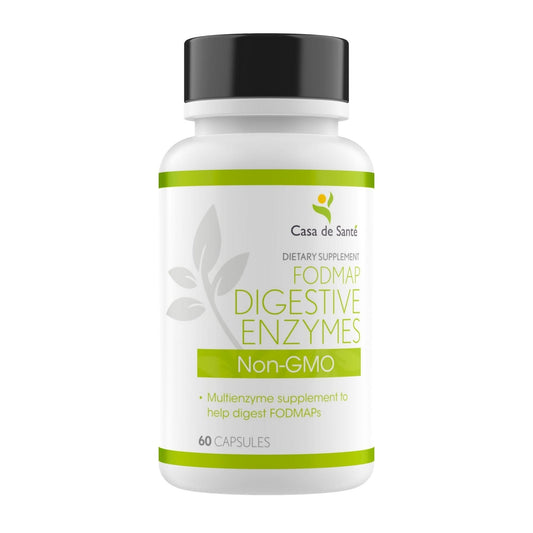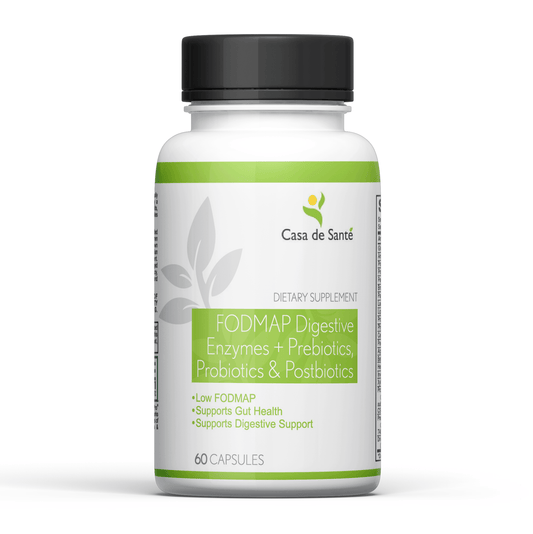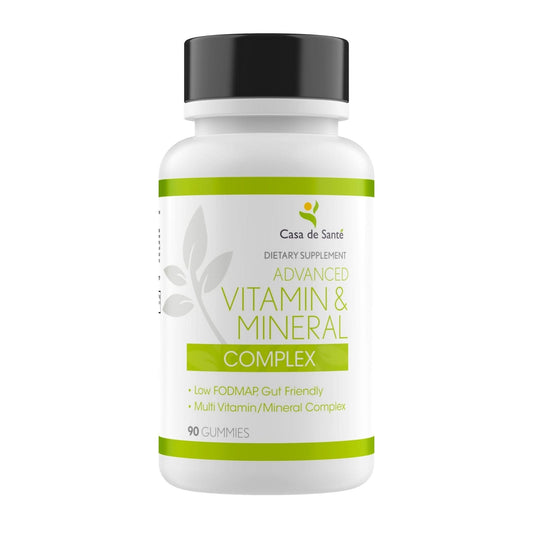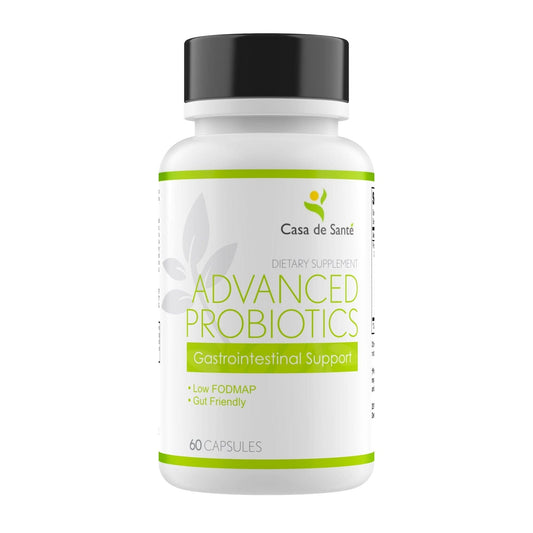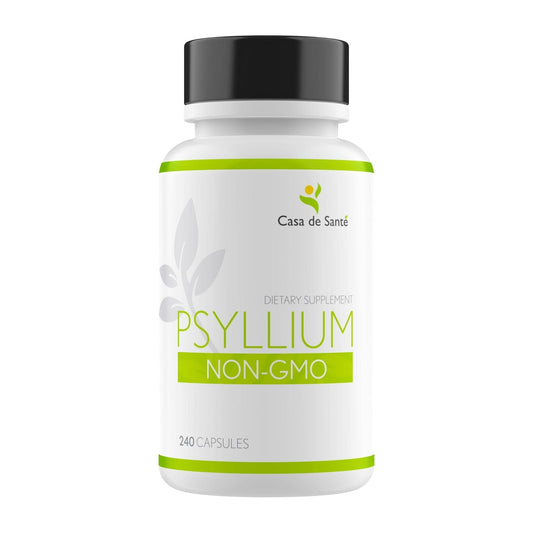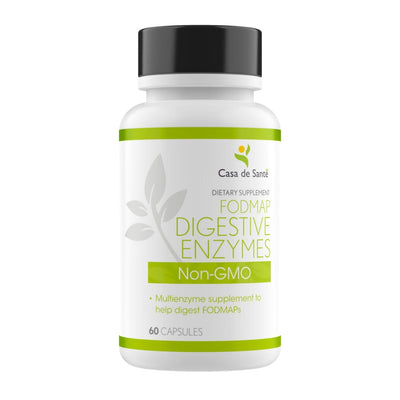The Ultimate FODMAP Vegan Meal Plan for Digestive Health
Ever find yourself feeling bloated or dealing with tummy troubles after meals? You're not alone. Many folks have turned to the FODMAP diet to help ease their digestive issues. Now, combine that with a vegan lifestyle, and you've got a recipe for a healthier gut. This guide will walk you through the ins and outs of a FODMAP vegan meal plan. It's all about knowing what to eat, what to avoid, and how to keep your meals tasty and satisfying. Let's jump in and see how you can make this work for you.
Key Takeaways
- A FODMAP vegan meal plan can help manage digestive issues while maintaining a plant-based diet.
- Understanding which foods are low in FODMAPs is crucial for meal planning.
- Vegan protein sources like tofu and tempeh are great low-FODMAP options.
- Meal planning and portion control are key to staying on track.
- Consulting with a dietitian can provide personalized guidance and support.
Understanding the FODMAP Vegan Meal Plan
What is a FODMAP Diet?
A FODMAP diet is designed to help individuals with digestive issues by reducing specific types of carbohydrates that can cause gut discomfort. These carbohydrates, known as Fermentable Oligo-, Di-, Mono-saccharides, and Polyols, are not easily absorbed in the small intestine, leading to symptoms such as bloating, gas, and stomach pain. The goal of a FODMAP diet is to identify which of these carbohydrates trigger symptoms and manage their intake accordingly.
Benefits of a Vegan FODMAP Diet
Combining a vegan lifestyle with a FODMAP diet can offer numerous health benefits. For starters, it encourages the consumption of a wide variety of plant-based foods, which are rich in nutrients and fiber. This can lead to improved digestion and overall gut health. Additionally, a vegan FODMAP diet can help manage symptoms of IBS and other digestive disorders by focusing on low FODMAP plant foods. It's essential to conduct a nutrition assessment to ensure you're meeting your nutritional needs while following this plan.
Common Misconceptions
There are several misconceptions about following a FODMAP vegan diet. One common myth is that it's too restrictive and lacks variety. However, with proper planning, you can enjoy a diverse range of meals. Another misconception is that all plant-based foods are high in FODMAPs, which is not true. Many fruits, vegetables, and grains are low in FODMAPs and can be included in your diet. Lastly, some believe that a FODMAP diet should be followed indefinitely, but it's actually meant to be a temporary adjustment to identify and manage trigger foods.
Essential Ingredients for a FODMAP Vegan Meal Plan
Low FODMAP Fruits and Vegetables
Navigating the world of low FODMAP fruits and veggies can be a bit tricky, but it's all about knowing which ones to pick. Fruits like bananas, oranges, and strawberries are your go-to low FODMAP options. They’re sweet, versatile, and easy to include in your meals. For veggies, think along the lines of carrots, spinach, and potatoes. These are not only delicious but also gentle on the digestive system. Remember, portion size matters—a low FODMAP food can turn high FODMAP if you overdo it.
Vegan Protein Sources
Finding protein sources that fit a vegan low FODMAP diet might seem challenging, but there are plenty of choices. Tofu and tempeh are excellent picks, as they are both nutritious and versatile. Canned chickpeas and lentils, when rinsed thoroughly, can also be included. Don’t forget about nuts and seeds like pumpkin seeds and peanuts, which are great for snacking or adding a crunch to your meals.
Grains and Dairy Alternatives
Grains are a staple in any diet, and for a low FODMAP vegan, options like quinoa, rice, and oats are fantastic. They provide the energy you need without upsetting your stomach. When it comes to dairy alternatives, opt for almond milk or rice milk. These are low in FODMAPs and can be used in everything from cereal to smoothies. Gluten-free bread and pasta made from rice or corn are also safe bets to keep your meals satisfying and FODMAP-friendly.
The key to a successful FODMAP vegan meal plan is variety and balance. By mixing and matching these ingredients, you can create meals that are not only gut-friendly but also full of flavor and nutrition.
Creating a Balanced FODMAP Vegan Meal Plan
Meal Planning Tips
Crafting a balanced FODMAP vegan meal plan can feel like a puzzle, but with some planning, it becomes second nature. Start by focusing on variety. Incorporate a wide range of low-FODMAP fruits and veggies like zucchini, carrots, and strawberries to keep meals exciting and nutritious. Remember, portion control is key. Even low-FODMAP foods can cause issues if consumed in large amounts. Make a habit of reading labels and keeping a food diary to track what works best for your digestive system.
Sample Meal Plan
Here's a quick look at what a day might look like:
- Breakfast: Oatmeal made with almond milk, topped with blueberries and a sprinkle of chia seeds.
- Lunch: Quinoa salad with roasted red peppers, cucumber, and a lemon-olive oil dressing.
- Snack: Rice cakes with peanut butter.
- Dinner: Stir-fried tofu with bok choy and brown rice.
- Dessert: A bowl of kiwi slices.
Adjusting for Nutritional Needs
Balancing a vegan diet with low-FODMAP requirements can be tricky, but it's doable. Ensure you're getting enough protein from sources like firm tofu, tempeh, and canned lentils (rinsed well). Don't forget about B12 and iron, which are crucial in a vegan diet. Consider fortified foods or supplements if necessary. Also, keep an eye on calcium intake; opt for fortified plant milks and leafy greens. It's all about finding what works for your body while keeping your meals satisfying and nutritious.
A well-thought-out meal plan not only supports digestive health but also ensures you're not missing out on essential nutrients. Every meal is a step towards better health, so take it one day at a time.
Delicious FODMAP Vegan Recipes to Try
Breakfast Ideas
Starting your day with a low-FODMAP breakfast can set the tone for a comfortable day ahead. Here are a few ideas to kickstart your morning:
- Berry-Chia Pudding: Mix chia seeds with almond milk and let them soak overnight. In the morning, top with fresh strawberries and kiwi.
- Quinoa Porridge: Cook quinoa in rice milk, add a pinch of cinnamon, and top with blueberries.
- Tofu Scramble: Sauté firm tofu with turmeric, spinach, and chopped bell peppers for a protein-packed start.
Lunch and Dinner Options
Creating satisfying meals that are both low in FODMAPs and vegan can be simple. Consider these options:
- Stuffed Bell Peppers: Fill bell peppers with a mix of quinoa, diced tomatoes, and spinach.
- Zucchini Noodles with Pesto: Spiralize zucchini and toss with a homemade pesto made from basil, pine nuts, and olive oil.
- Chickpea Salad: Use canned chickpeas, rinsed well, and mix with diced cucumbers, tomatoes, and a squeeze of lemon.
Snacks and Desserts
Snacking doesn't have to be boring or restrictive. Here are some tasty low-FODMAP vegan snacks and desserts:
- Rice Cakes with Peanut Butter: Spread a thin layer of peanut butter on rice cakes and top with banana slices.
- Coconut Yogurt Parfait: Layer coconut yogurt with low-FODMAP granola and fresh raspberries.
- Dark Chocolate-Dipped Strawberries: Melt dark chocolate and dip strawberries for a sweet treat.
Tip: Remember, portion control is key when following a low-FODMAP diet. Even low-FODMAP foods can become high in FODMAPs if consumed in large quantities. Enjoy your meals and snacks mindfully to keep your digestive system happy.
Managing Digestive Health with a FODMAP Vegan Diet
Identifying Trigger Foods
Figuring out which foods set off your digestive woes is a bit like detective work. Start by keeping a food diary. Jot down everything you eat and how you feel afterward. Over time, patterns will emerge. You might notice that certain foods consistently cause discomfort. Identifying these trigger foods is a game-changer for managing digestive health.
Monitoring Digestive Symptoms
Once you've pinpointed potential culprits, it's time to monitor your body's reactions. Are you feeling bloated after that apple? Gassy after a bowl of beans? Paying attention to your body's signals is key. Consider rating your symptoms on a scale from mild to severe. This can help you track progress and adjust your diet accordingly.
Long-term Health Benefits
Sticking to a FODMAP vegan diet can have long-term health perks. Not only might you experience fewer gut issues, but you could also see improvements in overall well-being. People often report more energy, better mood, and even clearer skin. Plus, a plant-based diet is linked to lower risks of chronic diseases. Over time, your gut might become more tolerant, allowing you to reintroduce some foods you once had to avoid.
Managing digestive health with a FODMAP vegan diet is a journey, not a quick fix. It requires patience, observation, and a willingness to adapt. But the rewards—a happier gut and a healthier you—are well worth the effort.
Expert Tips for Success on a FODMAP Vegan Meal Plan
Getting professional advice can make a world of difference when starting a FODMAP vegan meal plan. A dietitian can guide you through the maze of what to eat and what to avoid. They can help tailor the plan to your specific needs, ensuring you get all the nutrients you need without triggering symptoms. Plus, they can offer practical tips for meal prep and grocery shopping.
Staying Motivated
Staying on track with a FODMAP vegan diet can be tough, but here are a few tips to keep you motivated:
- Set realistic goals: Start small and build up. Maybe focus on mastering breakfast options first, then move on to lunch and dinner.
- Track your progress: Keep a food diary to see how far you've come and what changes have worked for you.
- Celebrate small wins: Did you manage a week without digestive issues? Treat yourself to something nice!
Overcoming Challenges
Challenges are part of the journey, but they don’t have to derail you. Here’s how to tackle them:
- Plan Ahead: Always have a plan B for meals. Keep some low FODMAP snacks handy for when you're on the go.
- Stay Informed: Keep up with the latest research and updates on FODMAP foods. This way, you're always prepared.
- Seek Support: Join online communities or support groups. Sharing experiences and tips with others can be incredibly helpful.
Remember, the goal is to find a sustainable way of eating that supports your digestive health. It's not about perfection, but about making choices that make you feel good.
If you're looking to thrive on a FODMAP vegan meal plan, check out our expert tips! These simple strategies can help you enjoy delicious meals while keeping your gut happy. For more helpful advice and resources, visit our website today!
Conclusion
Wrapping up, diving into a FODMAP vegan meal plan might seem a bit daunting at first, but it's totally doable. With a little planning and creativity, you can whip up meals that are both tasty and kind to your tummy. Remember, it's all about finding what works for you and your gut. Don't be afraid to experiment with different foods and recipes. And hey, if you slip up, no worries—it's all part of the learning process. Stick with it, and you'll likely find that your digestive health improves over time. Here's to happy eating and a happier gut!
Frequently Asked Questions
What is a FODMAP diet?
A FODMAP diet is a way of eating that limits certain carbs that are hard to digest and can cause tummy troubles like gas, bloating, and pain.
Why choose a vegan FODMAP diet?
A vegan FODMAP diet can help people who want to eat plant-based while also avoiding foods that upset their stomachs. It's good for both your health and the planet.
Can I still get enough protein on a vegan FODMAP diet?
Yes, you can get enough protein from foods like tofu, tempeh, and some nuts and seeds that are low in FODMAPs.
What are some common low FODMAP fruits and veggies?
Some low FODMAP fruits include strawberries and bananas, while veggies like carrots and spinach are also safe to eat.
How do I know if a food is high in FODMAPs?
You can check food labels, use a FODMAP app, or consult a dietitian to help you figure out which foods to avoid.
Is it okay to follow a FODMAP diet forever?
No, the FODMAP diet is usually temporary. Once your symptoms improve, you can slowly reintroduce foods to see what you can tolerate.



